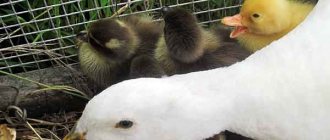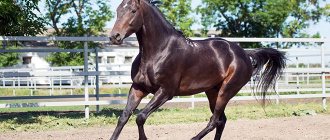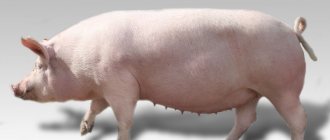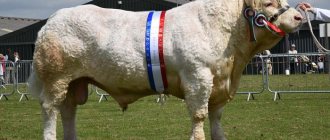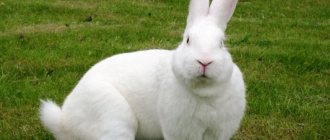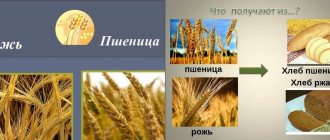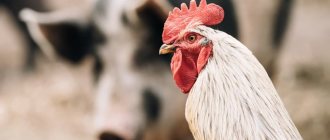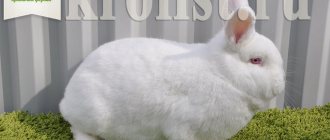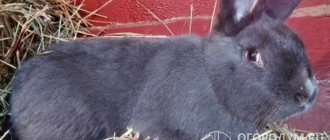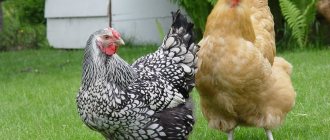What is cattle breeding
Cattle breeding is a branch of livestock farming that specializes in the breeding of cattle. At the same time, cattle breeding is the dominant industry. Cattle breeding has been a profitable business at different times. In addition to the fact that farmers received valuable meat, milk, offal, etc., they could also use draft power, so cultivating fields and other agricultural work was greatly simplified.
Cattle breeding is a branch of livestock farming that specializes in the breeding of cattle
Interesting!
Cows are very smart animals. If one cow suffers from a shock near the fence or another similar incident, then no other animal from the herd will approach the fence!
General characteristics of the livestock industry in Russia
Currently, Russian livestock farming provides more than 60% of agricultural products. Its main industries are: cattle breeding, sheep farming, pig farming and poultry farming. In turn, they are divided:
- for dairy, meat and meat and dairy cattle breeding;
- bacon, meat, fat and semi-fat pig farming;
- coarse-wool, semi-coarse-wool, fine-fleece, semi-fine-fleece, fat-tailed, meat-wool, and fur-coated sheep breeding;
- egg, meat and general poultry farming.
Playing a vital role in the national economy, the livestock industry largely provides the country with:
- Food products.
- Raw materials for the food industry.
- Bone meal.
- Medicines.
- Feed.
- Fur, leather, wool, down.
- Traction force.
- Manure.
Cattle breeding development
Also check out these articles
- The best turkey breeds
- Where are industrial-scale tanks and tanks used?
- Lightly salted cucumbers with dill
- The best varieties of white grapes
Cattle breeding is developing throughout the world. This area of human activity is of great importance, although sometimes undeservedly underestimated. Cattle breeding plays an important role in the economy of countries, and at the same time depends very much on agriculture. After all, it is precisely this that ensures the availability of high-quality feed (compound feed, grain, hay, root crops, etc.).
Good pastures are important for the development of small farms
For the development of small farms that specialize in cattle breeding, in addition to the availability of feed, good pastures are also important. After all, if on large farms animals, as a rule, are kept in stalls all the time, then small farms, keeping cattle in stalls, regularly take them out to graze on pastures to save feed. This is profitable and convenient, but only if there are such meadows and fields nearby and they are rich in healthy herbs. In their absence, the development of small farms quickly declines.
Interesting!
In India, the cow is a sacred animal and is revered today no less than in ancient times.
Today, the number of cattle is dominated by countries such as the USA, Brazil and India. This also includes China and Argentina. If we talk about the production of exclusively dairy products, the leaders in this area are India, the USA, China, Germany and Brazil. The development of cattle breeding in Russia is observed primarily in the forest-steppe and forest zones. These industries are also developing well in suburban areas, and to a lesser extent in the steppe and semi-desert zones.
Kinds
Different types of livestock farming are developing in Russia, all of which make up a large part of the country's GDP. Among the main ones are:
- Cattle breeding. Cow rearing is considered a large industry. It provides a small part of consumed meat products, where the share of beef is 13-15%. In the Russian Federation there are several types of cattle breeding - meat, milk and meat, dairy;
- Pig farming. The direction provides the entire population with meat products. Pigs are unpretentious animals, they adapt to any climatic conditions, reproduce quickly, and do not require special nutrition;
- Poultry farming. It is considered a popular industry that supplies chicken meat and eggs. The direction also produces fluff, meat and bone meal, and droppings for fertilizing the soil;
- Rabbit breeding. A popular destination that supplies large volumes of meat products. The development of livestock farming is aimed at increasing the efficiency of rabbit breeding; it is planned to increase production.
Other industries are developing in the country - sheep breeding, reindeer husbandry, and beekeeping.
Livestock industries
Cattle farming is the general name for raising cattle. But depending on what activity the farm specializes in, it will have one direction or another. There are three main areas in cattle breeding: meat, meat and dairy, dairy.
The most popular cattle breeding is stall breeding
In addition, livestock farming differs according to the type of farming. In ancient times, cattle breeding was nomadic. There is also semi-nomadic or transhumance cattle breeding, which involves regularly taking cattle for long walks to pastures. In some regions, they have to walk many kilometers to get quality food. At the same time, livestock can be driven to pastures not only for a day, but also for the entire warm period, for example. Well, the most popular cattle breeding is stall breeding. It involves raising cattle in stalls, without regular exercise.
Dairy farming
We recommend reading our other articles
- Sterilizing jars in the oven
- How to hatch goslings in an incubator
- The best eggplant caviar recipes
- Watermelon Ogonyok
Dairy cattle breeding involves breeding cows that produce milk. There are not many bulls on such a farm and they are kept mainly for insemination. Dairy cattle breeding is most developed where there are many forest-steppe and steppe zones. A variety of food and a pleasant climate together create the most favorable conditions for inseminating females and obtaining milk from them.
Dairy cattle breeding involves breeding cows that produce milk
Of course, the quality of milk is affected by many different nuances. This is not only food, but also climate, living conditions, as well as care and breed of the animal. So dairy farming depends on many factors.
Interesting!
On average, a cow produces about 200 thousand glasses of milk during her life.
Profitability of livestock farming in Russia
Perhaps the most important limiting factor preventing sufficient investment from being attracted is the extremely low profitability of Russian livestock farming. According to leading analysts, pig farming brings the greatest profit in the industry - 20%, poultry farming provides slightly less - 17%, milk production is profitable at best by 8%.
What is the reason for such low rates? After all, similar agricultural production in other countries of the world brings much greater profits and is much more profitable.
The fact is that, due to a number of historical, political and economic reasons, Russian livestock farming is under pressure from a large number of problems:
- natural and climatic nature;
- extremely low technological level of production;
- widespread use of manual labor;
- use of low-productive animal breeds;
- insufficient amounts of high-calorie feed;
- lack of an adequate level of veterinary protection, leading to frequent animal diseases;
- proper financial and legislative support from authorities;
- unsatisfactory level of management.
Classic ways to solve these problems can be conglomeration, cooperation, integration, as well as the creation of communities of consumers interested in obtaining high-quality and highly profitable products.
Beef cattle breeding
Beef cattle breeding specializes in producing meat. On farms where this work profile exists, there are many more bulls than cows, since they produce more meat (higher body weight and, accordingly, the percentage of muscles). Meat production is most often concentrated in steppe regions with semi-desert zones. In such areas there is a lot of land that requires ploughing. They also provide beef cattle with nutritious feed.
Meat production is most often concentrated in steppe regions with semi-desert zones
Interesting!
For 1 kg of animal protein obtained from cattle, almost 6 kg of vegetable protein is consumed.
About the meat and dairy direction was described above, as for the meat and dairy direction, it implies farming in such a way that there are enough bulls to produce meat products, but cows, at the same time, give offspring (and therefore milk) . Both females and males are valued equally on such a farm.
Geography of livestock farming in Russia
The main factor in the location of livestock enterprises has always been the availability of feed, that is, pastures. But as civilization develops, proximity to the consumer begins to play an increasingly significant role. Transportation of feed is not a big difficulty, but the shelf life of perishable products forces production to be located in close proximity to the sales area.
Taking into account these two circumstances, as well as the climatic features of the area, the geography of the location of livestock industries in our country has developed as follows:
- Dairy cattle breeding - Northern and Northwestern regions, Non-Black Earth Region, Urals, Far East.
- Beef cattle breeding - Volga region, North Caucasus, Southern regions of the Urals.
- Meat and dairy cattle farming is based in the southern regions of the European part of the country, in the Urals, the Volga region and Western Siberia.
- The third part of pig farms is located in the vicinity of the food supply (places where corn, sunflowers, and sugar beets are grown), that is, again in the southern regions of the country.
- Sheep farming is traditionally located in the steppe regions of the Volga region, Western Siberia and in the arid zones of the North Caucasus.
- Poultry farming, focused on the supply of meat and eggs, is present everywhere, although again a significant part of it is located in the southern feed bases.
Sheep breeding

